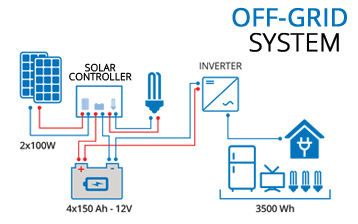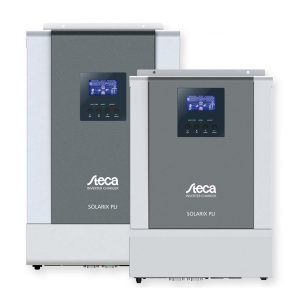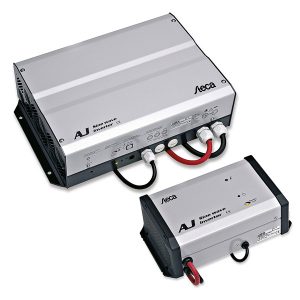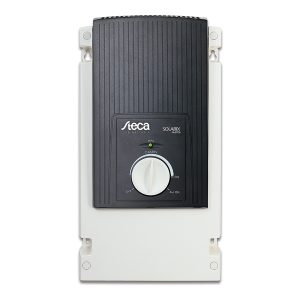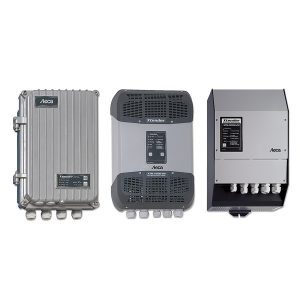Off-grid systems are installations not connected to the electricity grid: all the energy produced is stored and used on site.
The sizing is important
There are different type and dimensions of off-grid systems which can range from the simple point light to the telecommunication station, or to the plant to feed an entire village in remote areas. Apart from the photovoltaic modules, batteries, inverters and charge controllers are the main components for an off-grid system.
Always more interesting and competitive
With the components’ costs reduction and the dissemination of lithium technology, the off-grid systems are always more interesting and competitive compared to systems that involve the use of fossil fuels.
The configuration and the project of an off-grid system demands a detailed analysis of the input variables in the system (average irradiation, equivalent hours of light, orientation, inclination, shading) and of the output variables (withdrawal of consumer loads, time of use, autonomy).
When there is not a backup system from other sources, you cannot take the risk that users remain without power: what’s important, is to find a technician who is experienced on sizing.
An example for a small off-grid system in a cabin
Here is a simple example of a small off-grid system installed in an isolated cabin which is situated in the hills in the north of Italy (that is used during summer time):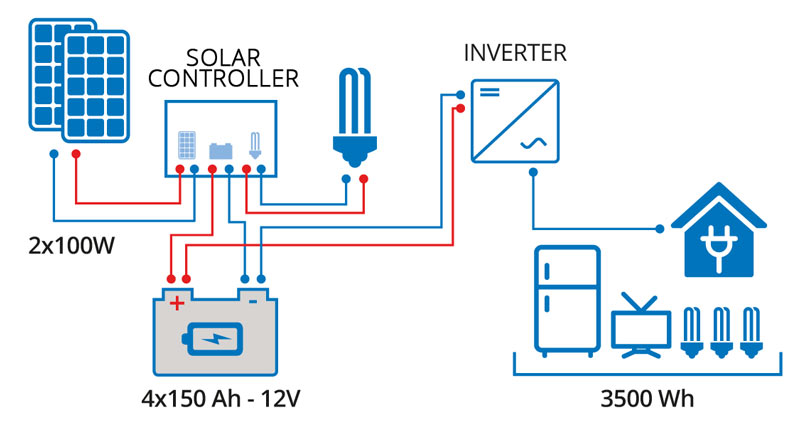
The consumptions are given by a TV, a small high efficiency fridge, and 3 led lights. Total power rating of about 300W, ant the cabin is used during the weekends and summer time.
The expected energy demand is about 3500 Wh/week; considering the system losses, we can assume that the capacity required for the batteries is 4000 Wh, guaranteed by 4 units of 15Ah capacity. During the time when the utilities are not used, the system will provide to charge the batteries.
The charging system will be implemented using 2 100 W photovoltaic modules and a 10 A charge regulator which, combined with the batteries and a 600 W inverter, guarantee the required performances.
The term off-grid indicates the power generating facilities that are not connected to an electricity grid and exploit the energy buildups.
For further information on the different components, it is possible to look at the different sections on VP Solar on-line catalogue dedicated to off-grid systems.
-
Inverters Off-Grid, Stand Alone
Steca: SolarixPI
The new generation of sine wave inverters Solarix PI are even more robust and safe.
The excellent overload capability combined with the ability to insert in parallel via the accessory PA link 1 to 4 machines make the drive ideal for all plants in the island of small and medium size.
SKU: n/a -
Inverters Off-Grid, Stand Alone
Steca: Xtender
All Steca Xtender inverter combined in one machine a very precise inverter and alternating functions as a charger, switching function and support of external sources (power boost).
The basic functions of the combined Steca.
The various functions can be combined so that they can perform complex functions with backup systems or as uninterruptible power supplies (UPS).
You can also paralleling up to 3 inverters and form three-phase systems with up to 9 cars in the same system.
SKU: n/a





